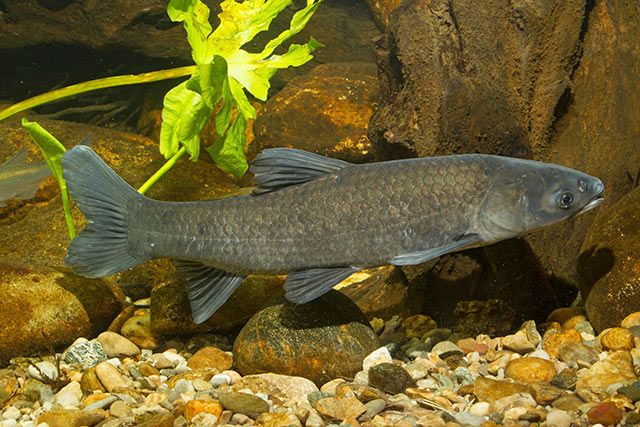Alerts
Please be advised that our bird aviaries are open!
Your Toronto Zoo is committed to the health and safety of the animals in our care. We take proactive steps to protect our birds from Avian Influenza which has been confirmed in a wild bird in southern Ontario, and some birds may still be off display.
Please note Splash Island is still closed and will not open until July due to unforeseen delays in construction. Please watch for updates on https://www.torontozoo.com/tz/splash or on our social media pages. Thank you!
Please note the following animals are currently not on display due to various reasons including Avian Bird Flu, and Covid-19 sensitivity:
- Flamingo, peacock, owl, bald eagle, and aviaries
- Some Kids Zoo Animals
- Cougar
- Moose
- Kangaroo walk through (kangaroos are still visible)
- Axolotl
We apologize for the inconvenience!


Fish
Location at the Zoo:
Indo-Malaya
Region: Southeast Asia
Black Carp
The body of the black carp is brown to black in colour, elongated and covered with cycloid scales. The dark edge of these scales give the black carp a cross-hatched appearance similar to the grass carp. Black carp have a small toothless mouth; pharyngeal teeth in the throat are used for crushing and consuming mollusks. Over their 15 year lifespan black carp can grow up to 1.8 m in length and weight up to 35 kg.Conservation Status: IUCN
